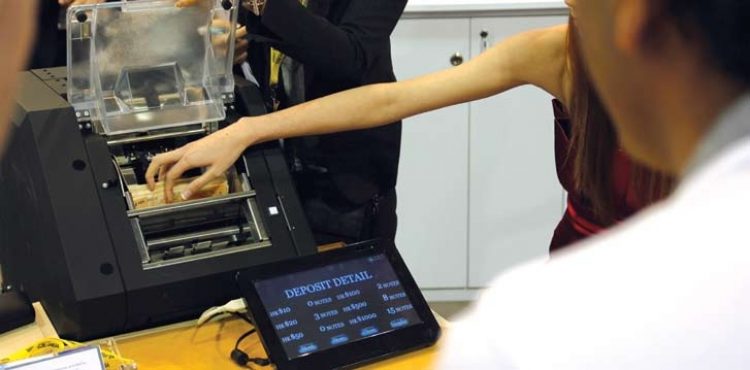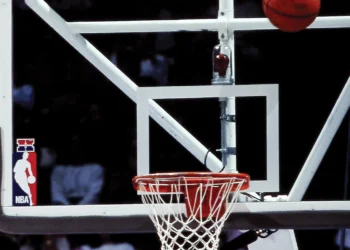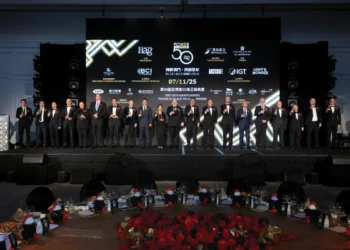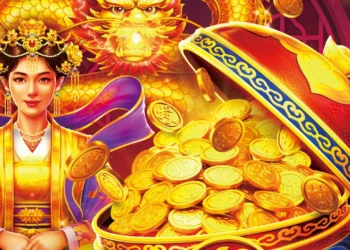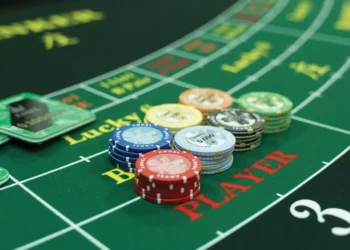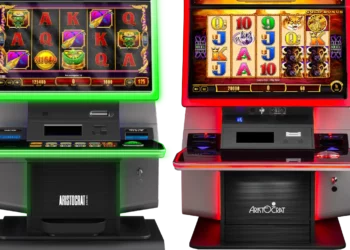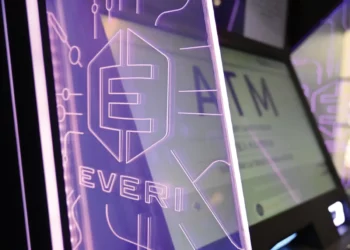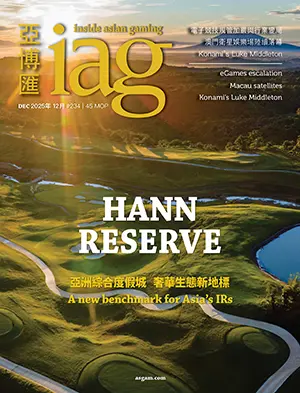JCM Global’s prototype Project 8 bill validator has been designed with Asian table games firmly in mind
The sheer volume and intensity of table play in Asian casinos is unique in the gaming industry. It’s common, for example, even in the Macau mass market for players to bring wads of cash to the table. The challenge for casino managements is to make sure the accounting process doesn’t kill the table action for the other players, but does maintain security for the house and for the vast majority of the honest players. It’s not enough simply for suppliers to offer Asian casino operators security equipment designed for other markets and hope it will prove adequate.
That’s a lesson JCM Global has taken to heart. At G2E Asia, Inside Asian Gaming spoke to Kunal Mishra, General Manager of the New Business Development Department for JCM Global, about the company’s prototype bill validator for table games. He gave us one of the first public demonstrations of the equipment, explaining how it can process bills at around three times the speed of slot machine validators currently available on the market.
IAG: What new products are you bringing to G2E Asia?
Kunal Mishra: We have a prototype concept of a table game bill validator which, for now, we are calling Project 8. This is the first We haven’t necessarily tried to take a slot technology and make it work for a table game. We started with a white sheet of paper and tried to create something that was relevant for table games.
Based on our market research, we found the biggest need for validation of cash in table games was for the Asian markets. We found the most critical elements were speed and the ability to escrow notes. With that in mind, about six months ago a colleague of mine, Makoto Hasegawa, and I began a quest to find the solution for it and we’re debuting it here at G2E Asia.
What’s been the response to the product?
When we came out here, we really weren’t sure what response we would get to the prototype. But the response exceeded our expectations significantly. I believe that’s because of the amount of money being gambled on the tables out here. The basic concept behind the product is pretty simple—the fastest speed, the best validation, and the ability to store a large number of notes. Those are the three tenets.
Since I started spending more of my time in Japan, this is the first product that we’ve designed—it’s been designed by Asians for the Asian region. It’s not a product designed somewhere else and localised for the Asian region. The Asian region and its markets are so unique that one size does not fit all.
A product or concept that works in North America or Europe does not necessarily correlate to Asia because the casinos are different, the players are different, and the wagering styles are different. We started out with a total white sheet approach to gaming at a table game and we came up with this unit. It’s still in a prototype format here, but basically what it does is it takes in up to 200 notes per buy in, has the ability to escrow those notes and reject any bad notes. The speed of this validator is eight bills per second.
What’s the processing capacity of the prototype?
The unit can process 200 bills for each buy in, stack multiple buy ins and store up to 3,400 bills in its cashboxes.
How does that compare with slot machine bill validators?
You can liken the current state of table games to slot machines in the US market in the late 1980s, where the slot customers had to wait for a staff member with change before they could gamble. The process really slowed down the game. Then JCM created the embedded bill validator, and slot profits dramatically increased. The number of games played per hour increased because of the bill validator. That is the scenario facing table game players in Macau today. The manual count on a buy-in is slower than necessary. We believe Project 8 could dramatically increase the number of table embedded bill validator, and slot profits dramatically increased. The number of games played per hour increased because of the bill validator. That is the scenario facing table game players in Macau today. The manual count on a buy-in is slower than necessary. We believe Project 8 could dramatically increase the number of table games played per hour, and therefore increase revenue.
Slot machine validators can do about one bill for every 2.5 or 3 seconds. The Project 8 prototype does eight bills a second. It’s a generational leap from a single feed validator. We wanted to give this market—which is so unique—a unique product to help both the operator and the patron. As an operator, if you’ve already got the players to come to your casino, you then want to have them entertained for as long as possible and have them make as many decisions per hour as possible.
Usually a bill buy-in process is a manual, laborious, process. It tends to take a significant amount of time for the interaction between the player and the dealer, but more importantly it slows down the game for the other patrons. They want to gamble, rather than watch money being counted. Throughout my career, my goal in developing products has been to enhance the player experience.
Please talk us through how it works.
Imagine I have walked into the casino with a stack of bills. The bills are handed to the dealer who simply inserts them into the Project 8 prototype. The unit then counts and validates the bills and pushes them into an escrow area for the player to see. The value of the sum of the bills is displayed for the casino staff and the player to see. Once the player has accepted the amount, the dealer simply hits a button and the bills are stacked. If for any reason the player doesn’t agree with the tally, it’s simple and quick to do a recount.
Is the tally displayed on every transaction or is it just when the player requests?
It’s always generated for the player. Whenever we transition from a manual process to an electronic process, we have to be sensitive to the fact that there is a learning curve for the player and we must go the extra mile to ensure trust is developed by the player towards the device. We are, in essence, speeding up a manual process via technology.
How long would that count process of say 60 bills take for that amount of cash if done manually?
Our research has shown 20 bills takes anywhere from 70 seconds to 90 seconds depending on casino and dealer. In our demo to you, we have done 66 bills in less than 15 seconds including time for the player to make his or her decision on whether to accept the machine count. We want to give players the maximum amount of time doing what they came here to do—i.e. play table games. My perspective is I want to give the players the most bang for their entertainment dollar. The way we can do that here at JCM Global—as a cash management company— is to give them the faster experience. The end result is increased hands per hour or increased decisions per hour. This is JCM’s first bill validation product developed exclusively for the Asian casino market. We always say it’s for Asians, by Asians.
Can you talk us through the journey of the product to market?
It’s a very systematic process. The first thing that we looked at was the problem. Second, we looked for how we could solve the problem. Third, we developed the technology necessary to solve the problem. Then, from there we moved to the first prototype that’s based on best guesses of the market. Now, we’ve taken the market feedback and what we’re doing in that is we’re going to create the final product. I hope Project 8 will be in the field by this time next year. The modifications we need to make based on industry feedback are not that significant.
We have to get buy-in from the operators, the regulators and the players. The modifications we need to make based on industry feedback are not that significant. We’re just going to go ahead and give it a slightly different wrapper and it’ll be ready for the market.
The feedback we’ve had is that everyone is excited about it. It’s a win for everyone. The operators get more decisions per hour, the regulators get more security and the players get more hands per hour. When I look at the ROI [return on investment] for this product, I really look at it as a value for time. That’s the way Project 8 has been developed.
Is there any reason why this product shouldn’t also be applicable to financial services?
It certainly could be. Our future focus—and that would be a localisation of the product—could be in financial services. But our primary goal today—JCM has served the gaming industry for over 20 years and I have served this industry for over 15—is to really bring this technology to the casino tables right now. We believe the effect of Project 8 could be that profound because cash count at the casino table is one of the last vestiges of a very laborious manual process. That really hasn’t changed for years.






